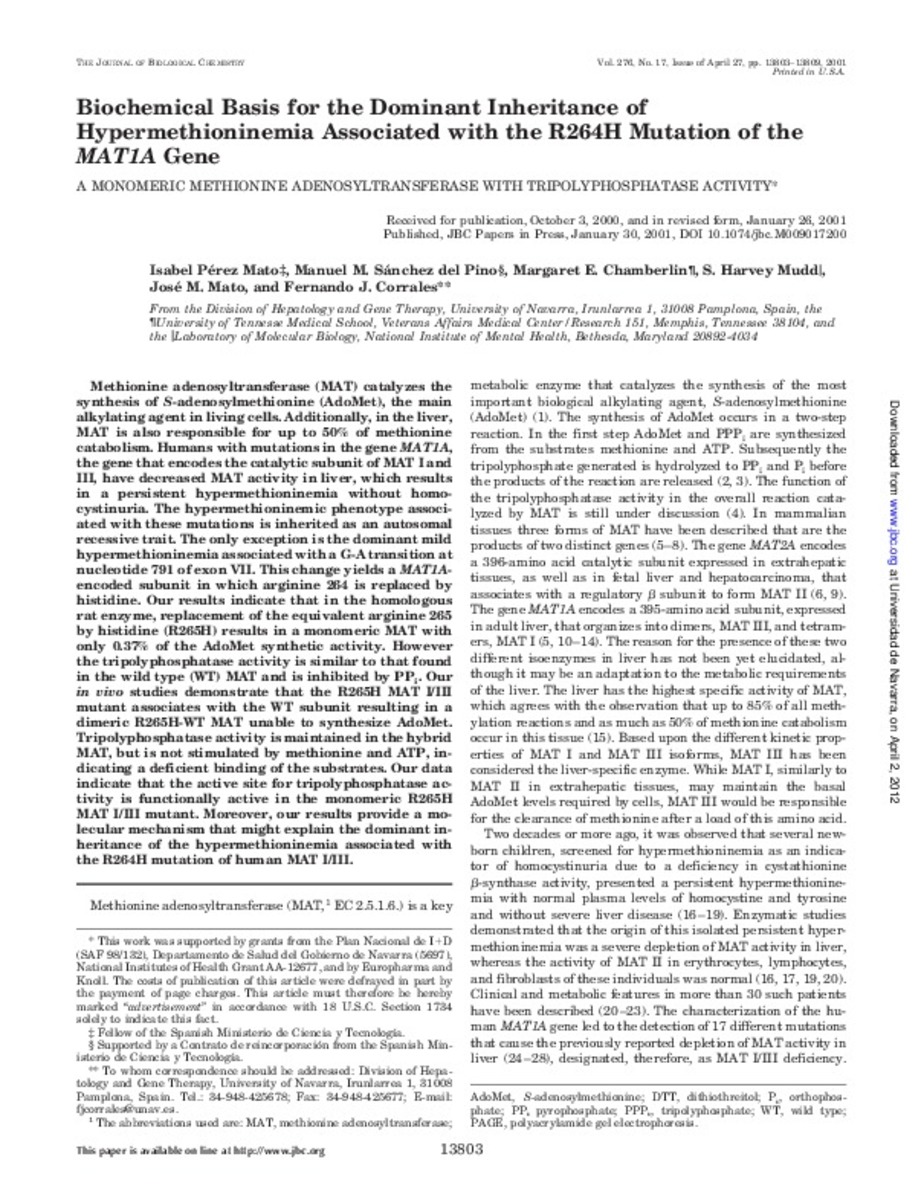Biochemical basis for the dominant inheritance of hypermethioninemia associated with the R264H mutation of the MAT1A gene. A monomeric methionine adenosyltransferase with tripolyphosphatase activity
Palabras clave :
Genes, Dominant
Methionine/blood
Methionine/genetics
Methionine Adenosyltransferase/genetics
Mutation
Fecha de publicación :
2001
Editorial :
American Society for Biochemistry and Molecular Biology
Cita:
Perez Mato I, Sanchez del Pino MM, Chamberlin ME, Mudd SH, Mato JM, Corrales FJ. Biochemical basis for the dominant inheritance of hypermethioninemia associated with the R264H mutation of the MAT1A gene. A monomeric methionine adenosyltransferase with tripolyphosphatase activity. J Biol Chem 2001 Apr 27;276(17):13803-13809.
Aparece en las colecciones:
Estadísticas e impacto
0 citas en

0 citas en

Los ítems de Dadun están protegidos por copyright, con todos los derechos reservados, a menos que se indique lo contrario.







